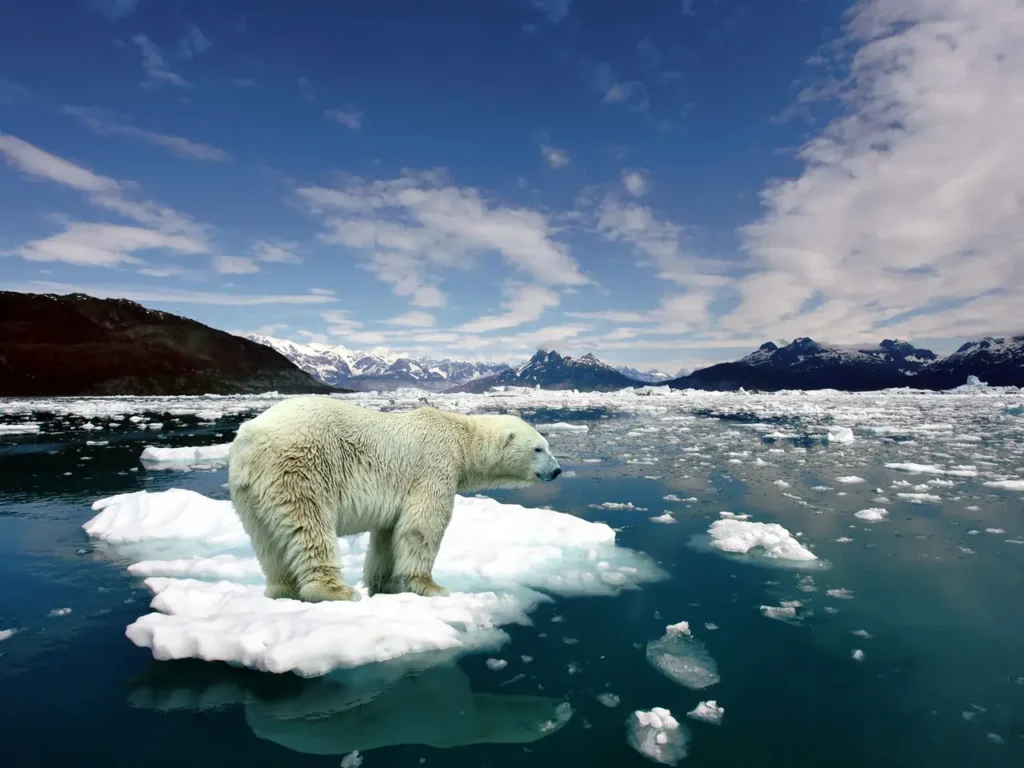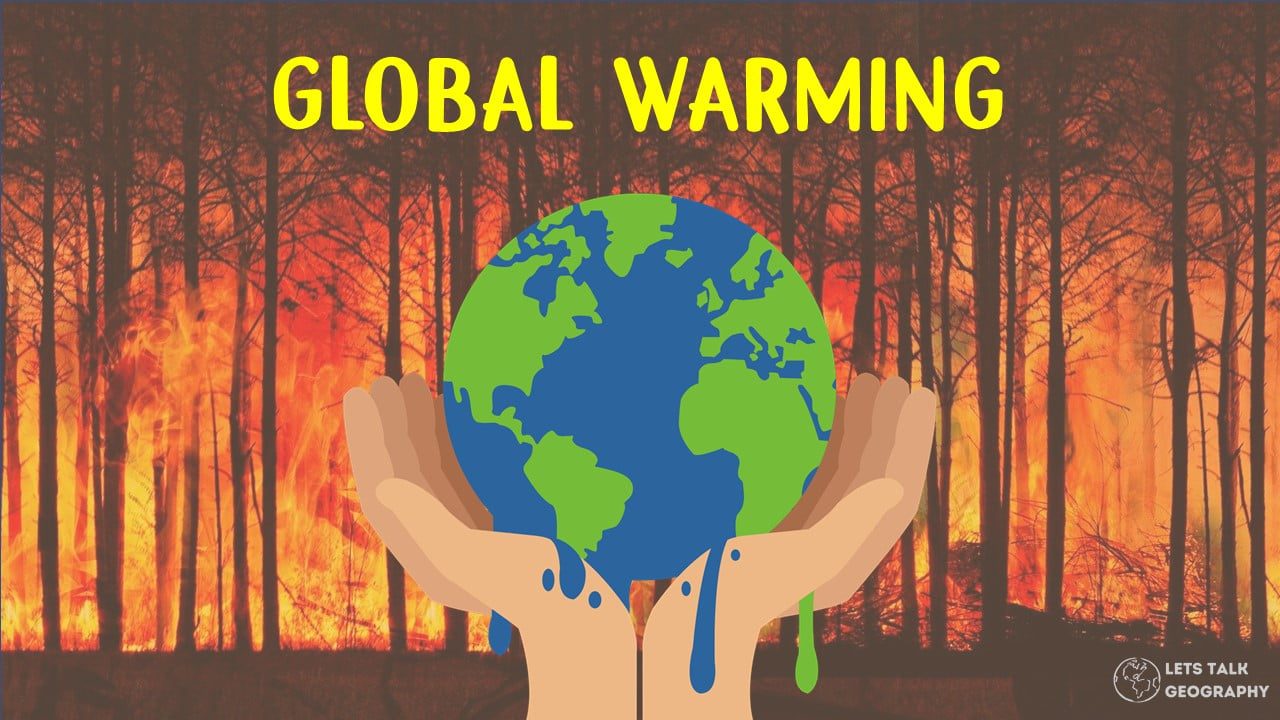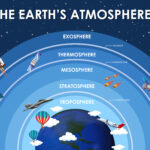⫸ Introduction to Global Warming
Global warming is the gradual increase in the Earth’s average surface temperature caused by greenhouse gases accumulating in the atmosphere and trapping the sun’s heat. This increase in temperature is largely due to human activity’s emissions of greenhouse gases.
Greenhouse gases form a “blanket” around Earth that traps energy from the sun. The trapped energy warms the Earth’s atmosphere and disturbs its climate.
⫸ What is global warming, and why should we be worried about it?
World annual temperature has risen by an approx. more than 1 degree Celsius during the Industrial Revolution. Between 1880 and 1980, it climbed by 0.07 degrees Celsius per ten years. The pace of growth has more than doubled since 1981 and raised by 0.18 degrees Celsius or 0.32 degrees Fahrenheit every decade for the last 40 years.
So, what does this mean for us? We’re already seeing more extreme weather events, like heat waves and hurricanes, which can cause serious damage. The longer we wait to address global warming, the worse things will get. We need to take action now if we want to protect our planet and future generations.
⫸ Causes of Global Warming
1. Burning of Fossil Fuels
Human activity, mainly the burning of fossil fuels that pump carbon dioxide (CO2), methane, and other greenhouse gases into the atmosphere, is causing global warming, which is the progressive heating of the Earth’s surface, oceans, and atmosphere. The major causes include:
CO2 pollution is released into the environment when fossil fuels like coal and gas are burned to generate electricity and power.
In comparison to the rest of the world, Australians are major CO2 polluters. Their CO2 pollution per person is about double that of other developed countries and more than four times that of the rest of the globe.
2. Deforestation & Tree-Clearing
Plants and trees help to regulate the climate by absorbing carbon dioxide from the air and releasing oxygen back into it. Forests and woodlands operate as carbon sinks, helping to maintain global warming below 1.5°C.
- Humans, on the other hand, clear enormous areas of land all over the world for farming, urban and infrastructural development, and the sale of tree products like lumber and palm oil.
- When we cut down or burn vegetation, the stored carbon dioxide is released, which contributes to global warming.
3. Agriculture & Farming
Methane, a greenhouse gas, is produced by livestock such as sheep and cattle. The vast amount of methane created by livestock grazing is a major contributor to climate change.
Some of the ones used by farmers also emit nitrous oxide, which is a greenhouse gas.
⫸ Effects Of Global Warming
1. Increase in Temperature
The rise in global temperatures is one of the most visible and direct effects of global warming. According to the National Oceanic and Atmospheric Administration (NOAA), the average global temperature has climbed by around 1.4 degrees Fahrenheit (0.8 degrees Celsius) over the last 100 years.
2. Ice Melt
The melting of Arctic Sea ice is one of the most dramatic repercussions of global warming. In both the fall and winter of 2015 and 2016, sea ice reached record-low extents, indicating that the ice was behind when it was meant to be at its peak. Because of the melting, less dense sea ice lasts for years.
As a result, the ice’s sparkling surface throws very little heat back into the atmosphere, and more is absorbed by the ocean’s darker surface, generating a feedback loop that causes even more melting.

3. Extreme Weather
Another result of global warming is extreme weather, which means some places might witness extreme hot weather conditions. Whereas someplace might see colder-than-normal winters.
Climate change can lead the polar jet stream, which separates the chilly North Pole air from the warm equatorial air, to shift south, carrying cold Arctic air. That’s why some states may experience an unexpected cold snap or a colder-than-normal winter despite the long-term global warming trend.
4. Agricultural Challenges
Agricultural systems will almost certainly be crippled. Even though some growing seasons will lengthen, the combined effects of drought, severe weather, lack of accumulated snowmelt, the increased presence of multiple pests, declining groundwater graphs, and the absence of agricultural land could result in severe crop failures and livestock scarcities around the world.
⫸ Greenhouse Effect and Global Warming
- The warming that occurs when certain gases in the Earth’s atmosphere trap heat is known as the “greenhouse effect.” These gases, like the glass walls of a greenhouse, let in a light yet restrict heat from escaping, thus the name.
The energy from the sun is absorbed by the Earth’s surface and then radiated back into the air as heat. Some of the heat is trapped in the atmosphere by greenhouse gas molecules, while the remainder escapes into space. The higher the concentration of greenhouse gases in the atmosphere, the more heat is trapped in the molecules.
- Humans are now strengthening the greenhouse effect and warming Earth dramatically, and in ways that promise many repercussions, experts warn, through the burning of fossil fuels and other activities that have generated massive volumes of greenhouse gases, notably over the past several decades.
⫸ Prevention Of Global Warming
- Undoubtedly, the earth is warming steadily, and the reasons for this have been discussed previously in the article. Is there, however, a solution to this problem? Yes! Yes, there is…
- Recycle more, drive less, plant trees, switch to renewable energy, use energy-efficient devices, use less hot water, turn off electronic devices, spread awareness, and save water are some of the common ways by which we can solve this problem to some extent.
⫸ Global Warming And Climate Change
- Climate change refers to a long-term change in the usual weather patterns in local, regional, and global climates. These changes have a huge impact on different things.
- Climate change has significantly impacted practically everything due to the greenhouse effect and other factors stated above.
- To monitor and research past, current, and future climate change, scientists employ data from the ground, air, and space, as well as theoretical models.
Global land and ocean temperature increases; rising sea levels; ice loss at Earth’s poles and in mountain glaciers; frequency changes in extreme weather such as hurricanes, increased temperatures, forest fires, dry spells, floods, and rainfall; and cloud and vegetation cover changes, to name a few, are all evidence of climate change key indicators.
⫸ Can Global Warming Be Reversed?
- We can almost restore our earth’s climate and reverse global warming in specific ways. This might involve using wind turbines instead of coal and other dangerous substances for energy production, decreasing food waste, adopting a plant-rich diet, restoring tropical forests, and constructing solar farms worldwide for additional energy generation.
- Alternative strategies to slow or minimize global warming, collectively called “climate engineering“ or “geoengineering,” have also been proposed. Some geoengineering concepts call for injecting reflecting particles into the upper atmosphere to disperse and reflect sunlight to space, which would cool the Earth’s surface.
- Other ideas include putting iron in the oceans to encourage large-scale phytoplankton blooms, which would pull carbon dioxide from the atmosphere via photosynthesis.
While such methods may work in theory, many climate experts oppose implementing geo-engineering until we have a better understanding of its potential adverse effects.
⫸ FAQ:
1. What is Global Warming?
Global Warming refers to the gradual increase in the Earth’s average surface temperature. The main component of Global Warming is the increased emission of greenhouse gases. These gases form a “blanket” around Earth that traps energy from the sun. This trapped energy makes the Earth’s atmosphere warm and disturbs the Earth’s climate.
2. What causes Global Warming?
Global Warming is primarily caused by the increased emission of greenhouse gases. These gases are released into the atmosphere when we burn fossil fuels such as coal and oil. Greenhouse gases like carbon dioxide and methane trap heat and make the Earth’s atmosphere warm.
3. How does Global Warming affect the environment?
- Global Warming can also cause more extreme weather events, like hurricanes, droughts, and heatwaves. These events can damage homes, disrupt transportation, and cause loss of life.
- Global Warming has several effects on the environment. One is sea-level rise. As the Earth’s atmosphere warms, the oceans expand, and sea levels rise. This can lead to flooding and other problems for coastal communities.
4. What can we do to prevent Global Warming?
One way to prevent Global Warming is to reduce our emission of greenhouse gases. We can do this by using fewer fossil fuels, and by using more renewable energy sources like solar and wind power. We can also help by planting trees, which absorb carbon dioxide from the atmosphere. Another way to prevent Global Warming is to adapt to the changing climate. This can include building flood-resistant homes and creating drought-resistant crops.
5. What are the consequences of Global Warming?
If we do not take steps to prevent Global Warming, the consequences could be catastrophic. Global Warming could cause sea-level rise that would flood coastal communities. Extreme weather events could damage homes and disrupt transportation. And the changing climate could lead to food shortages and loss of life. We must take action now to prevent Global Warming and protect our planet for future generations.
6. Is Global Warming reversible?
It is possible to reverse Global Warming, but it will take a lot of effort from people all over the world. We need to reduce our emissions of greenhouse gases, and we need to adapt to the changing climate. We also need to plant trees and restore natural habitats. If we all work together, we can reverse Global Warming and create a sustainable future for our planet.





